Abstract
The antiendotoxic activity of lipid A antiserum was studied in rabbits, using lipid A (lipopolysaccharide)-induced fever and skin necrosis as test systems. It was found that lipid A antiserum had no significant antipyretic effect when it was incubated with lipid A or injected intravenously before lipid A challenge. However, in animals that were pretreated (day 0) with a single dose of lipid A (lipopolysaccharide), a significant protective effect of passively transferred antiserum (day 1) to lipid A (lipopolysaccharide fever) (day 2) was observed. Also, the lipid A (lipopolysaccharide)-induced local shwartzman reaction could be prevented by lipid A antiserum. In the fever system, the degree of protection depended on the preparative and the challenge doses as well as on the amount of antiserum transferred. The fever protection mediated by lipid A antiserum seemed to be lipid A (lipopolysaccharide) specific with regard to both the preparative and the challenge injections. Lipid A specificity of the protective factor present in the antiserum was indicated by the fauggest that the factor might be identical with lipid A-specific immunoglobulin. The significance of the preparative injection is not understood at the present time. Iti is concluded, however, that in the fever protection system described, besides specific humoral factors, other factors, perhaps cellular, are involved.
Full text
PDF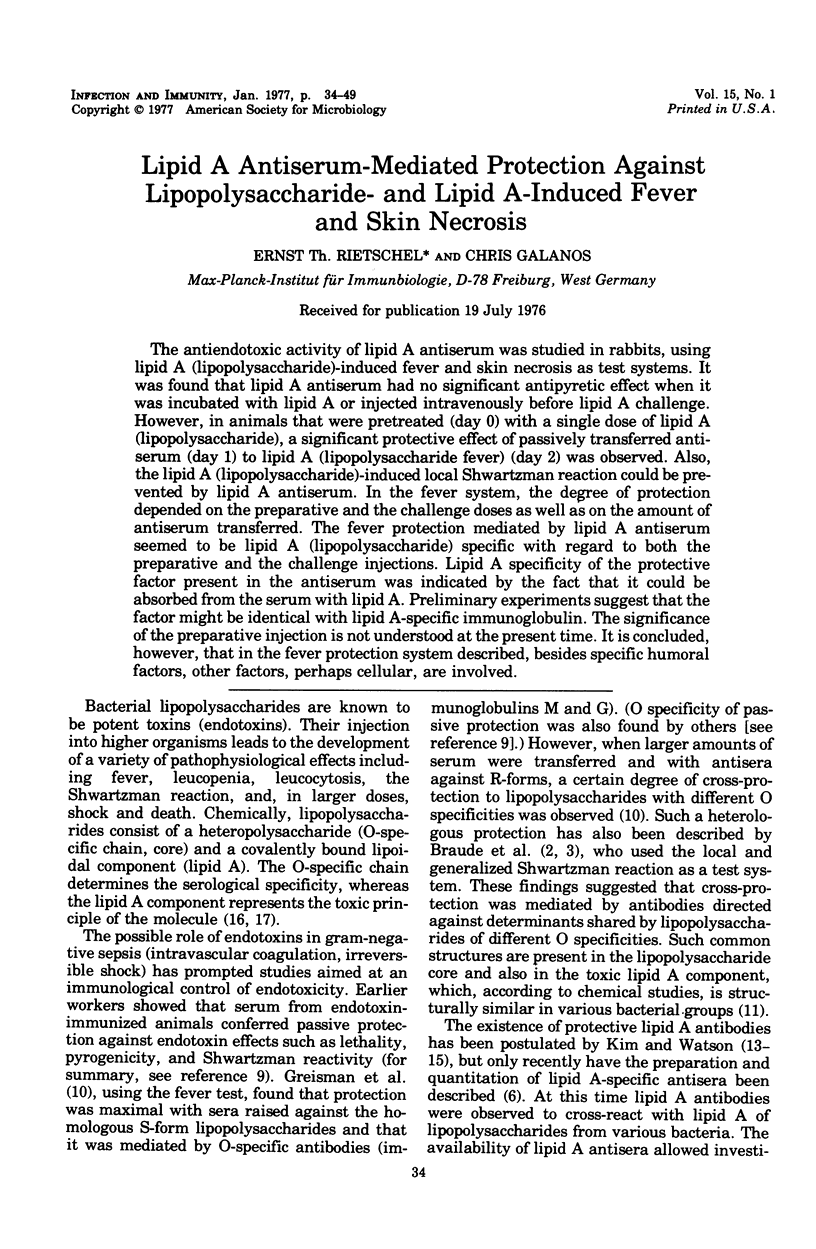
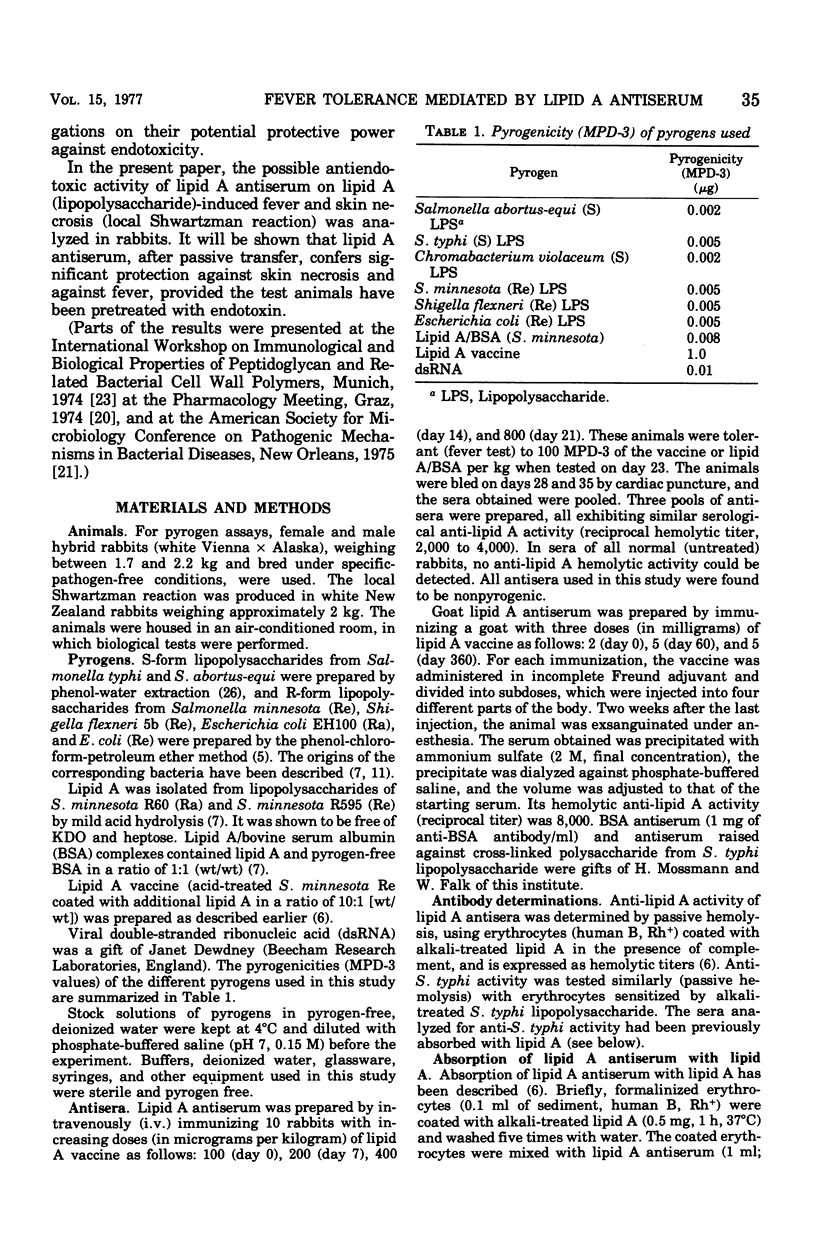
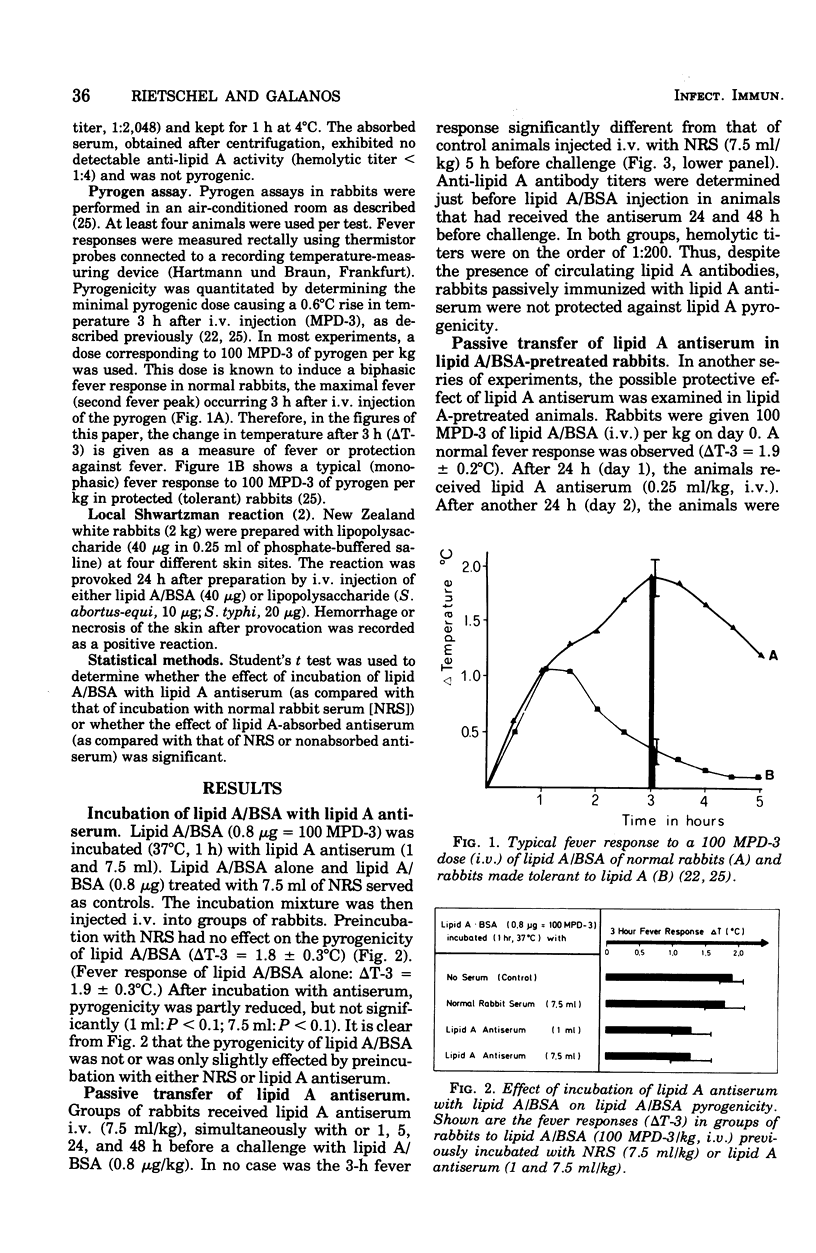
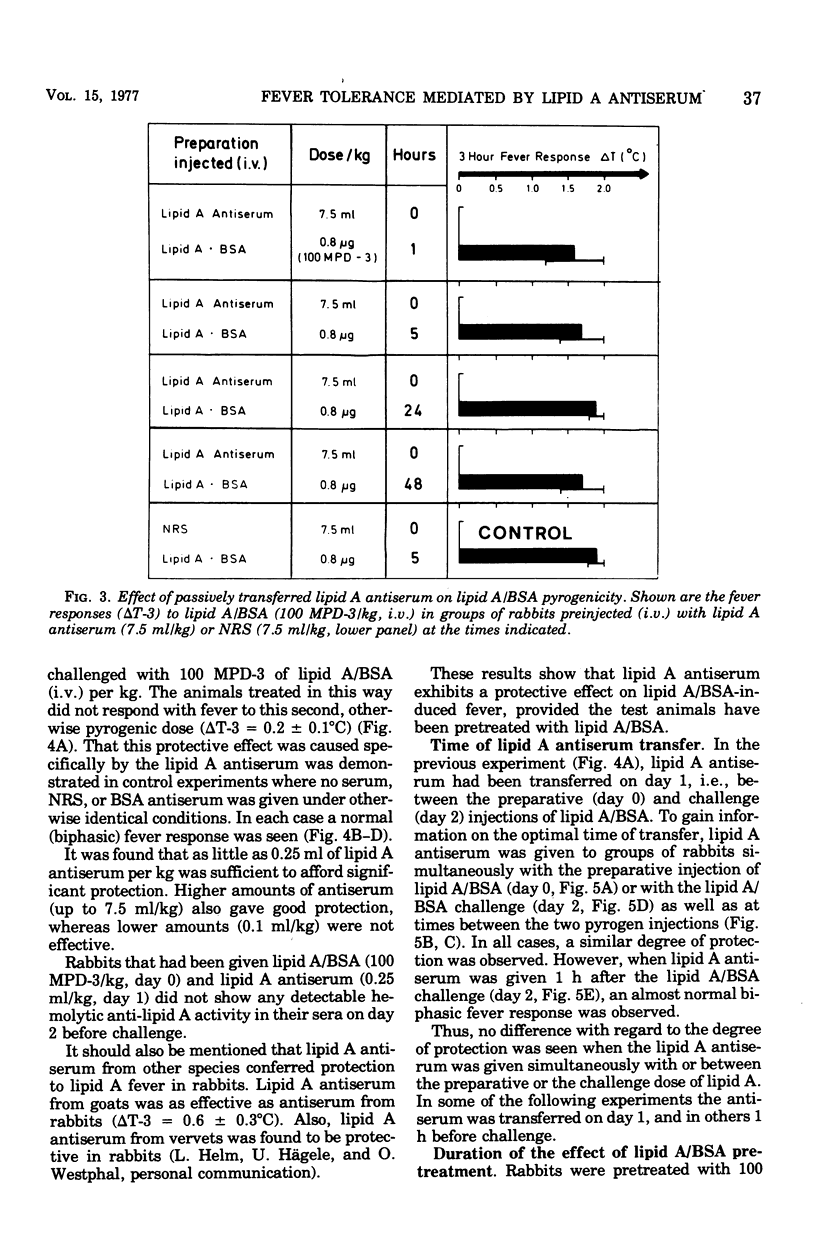
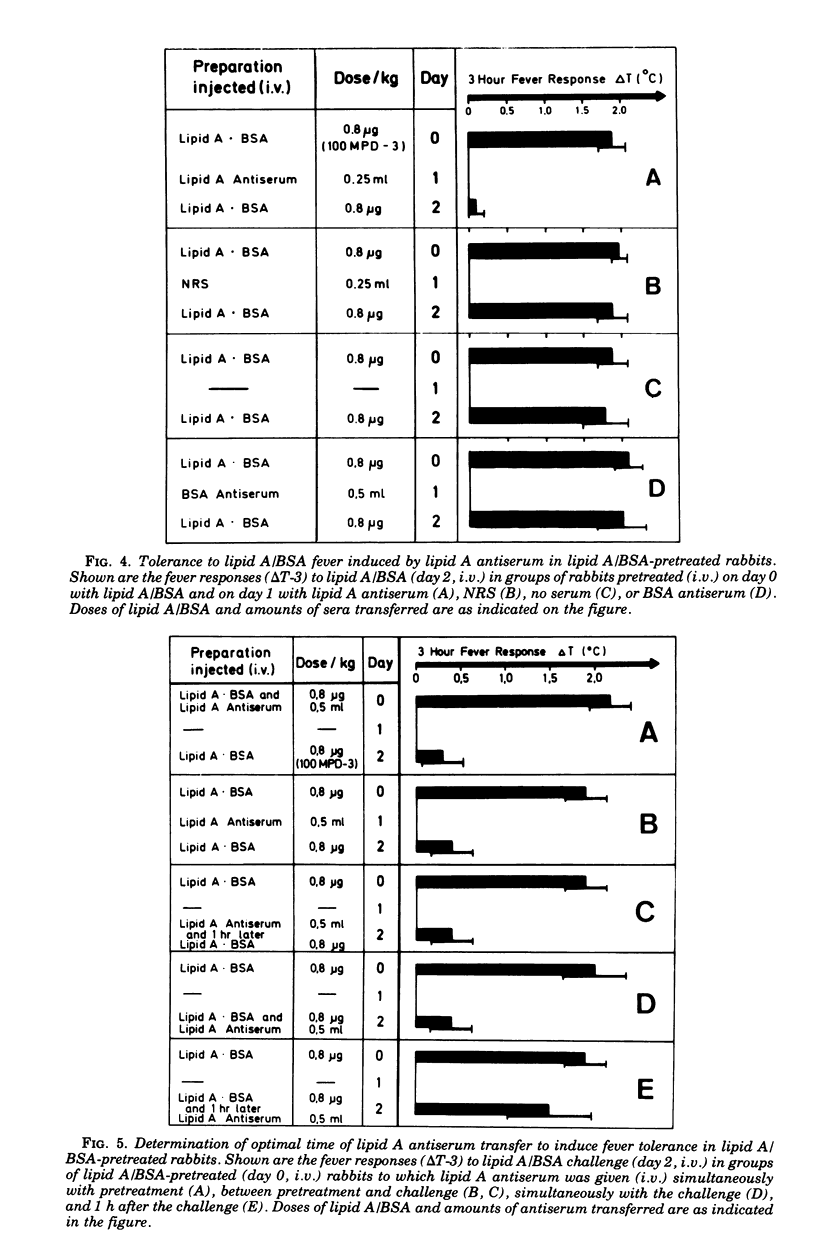
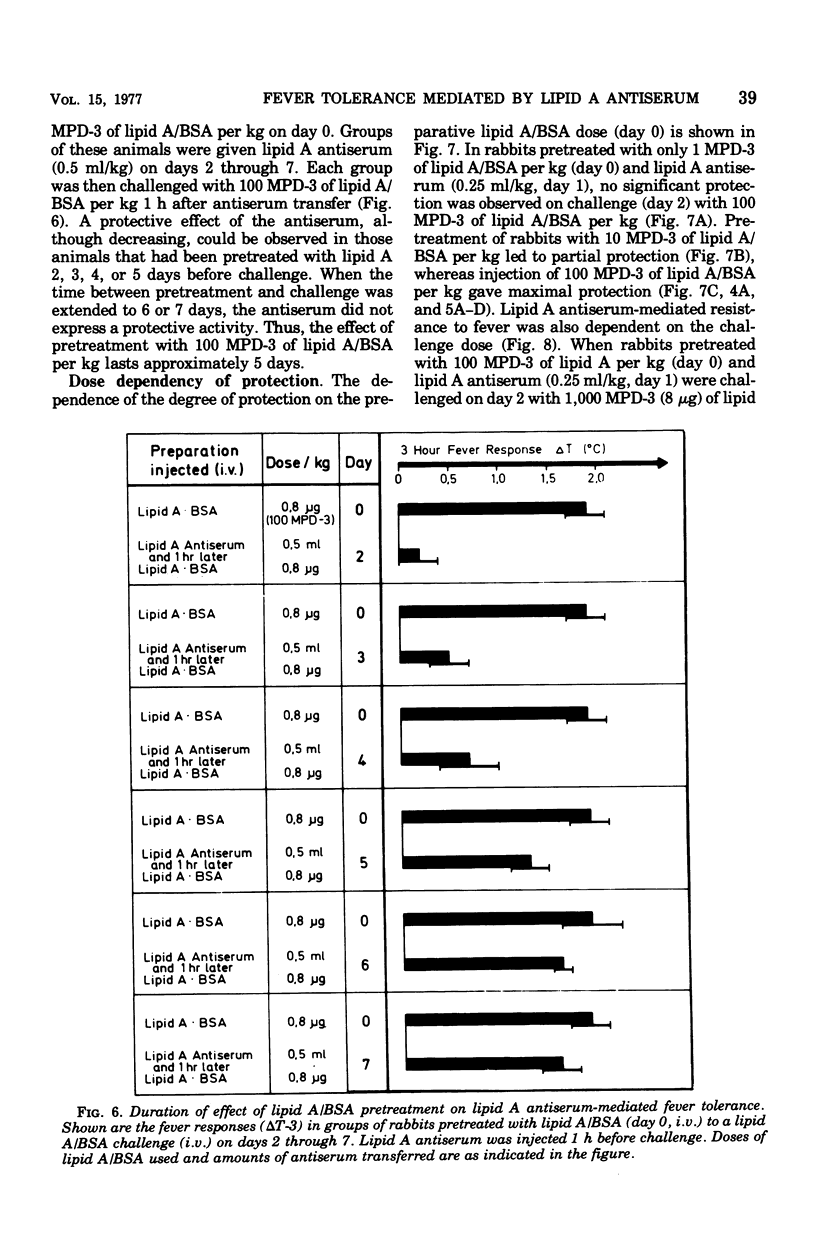
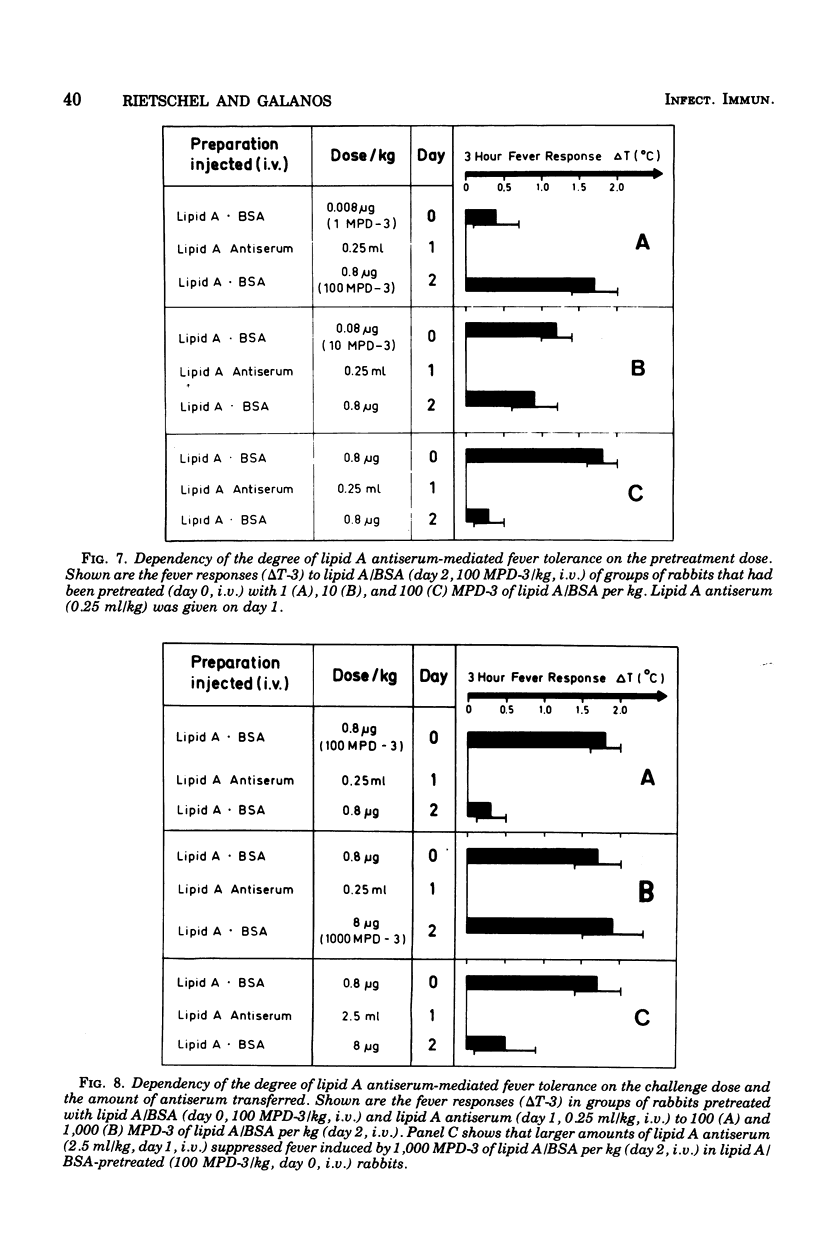
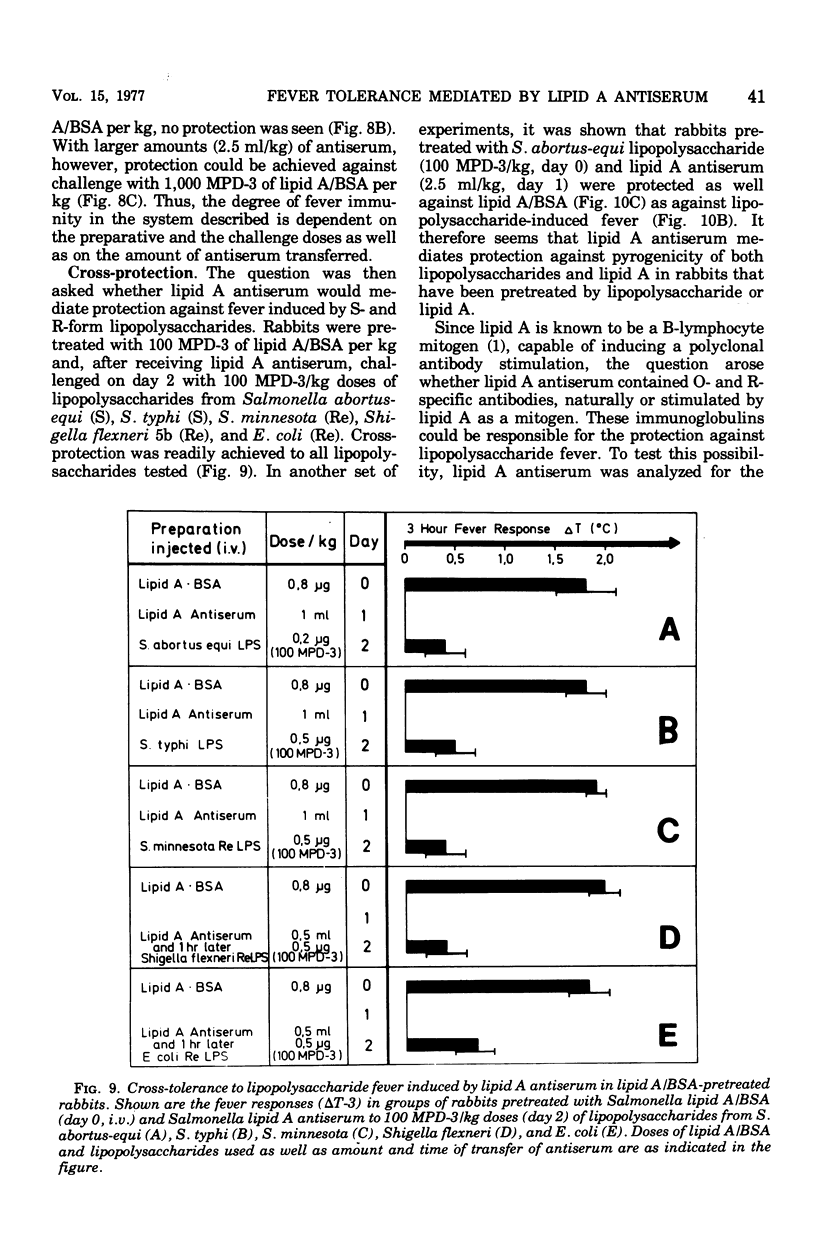

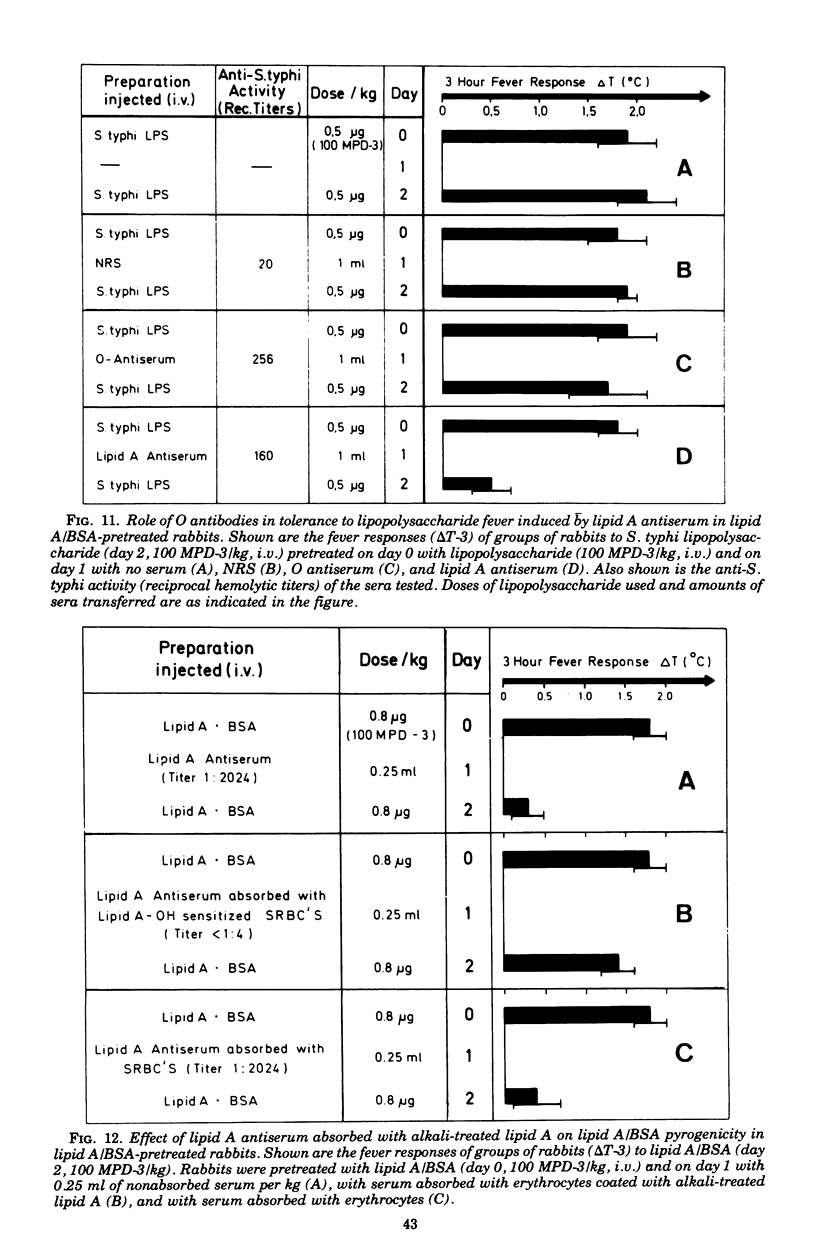

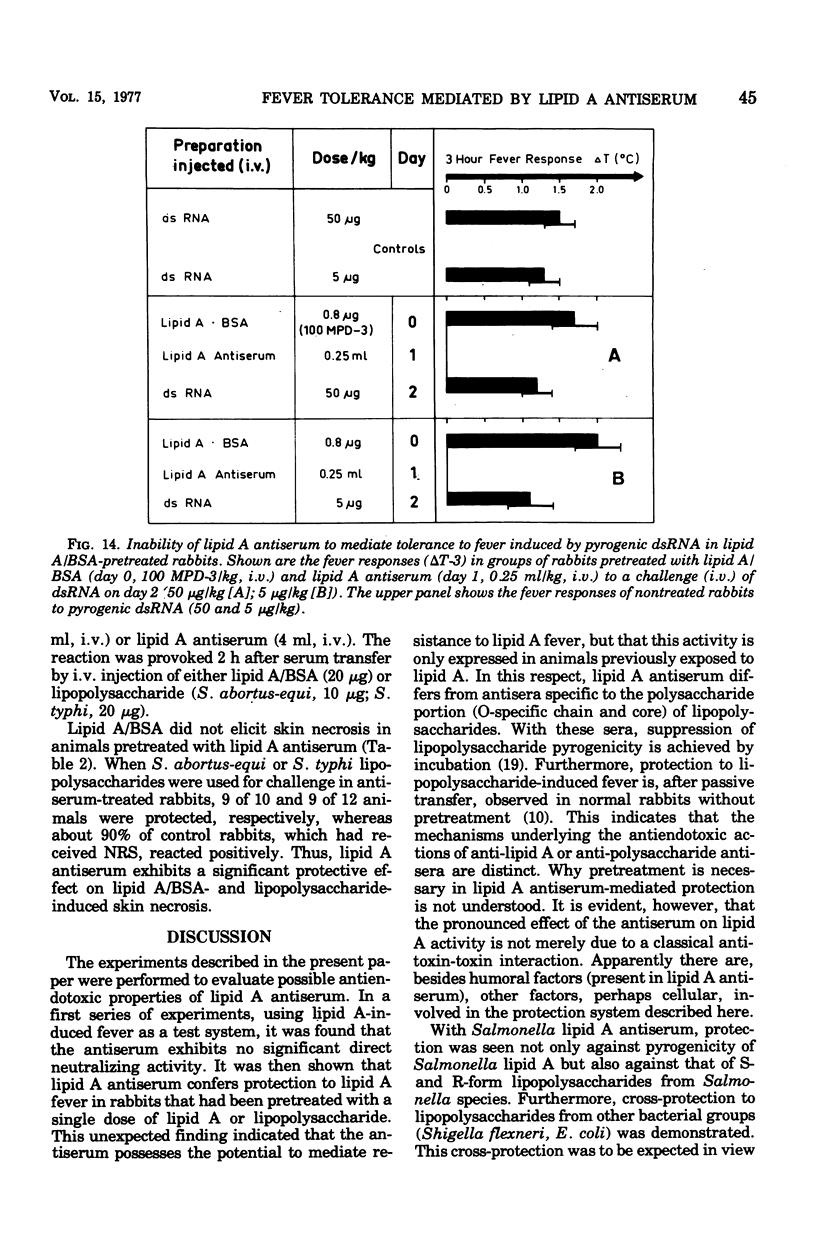
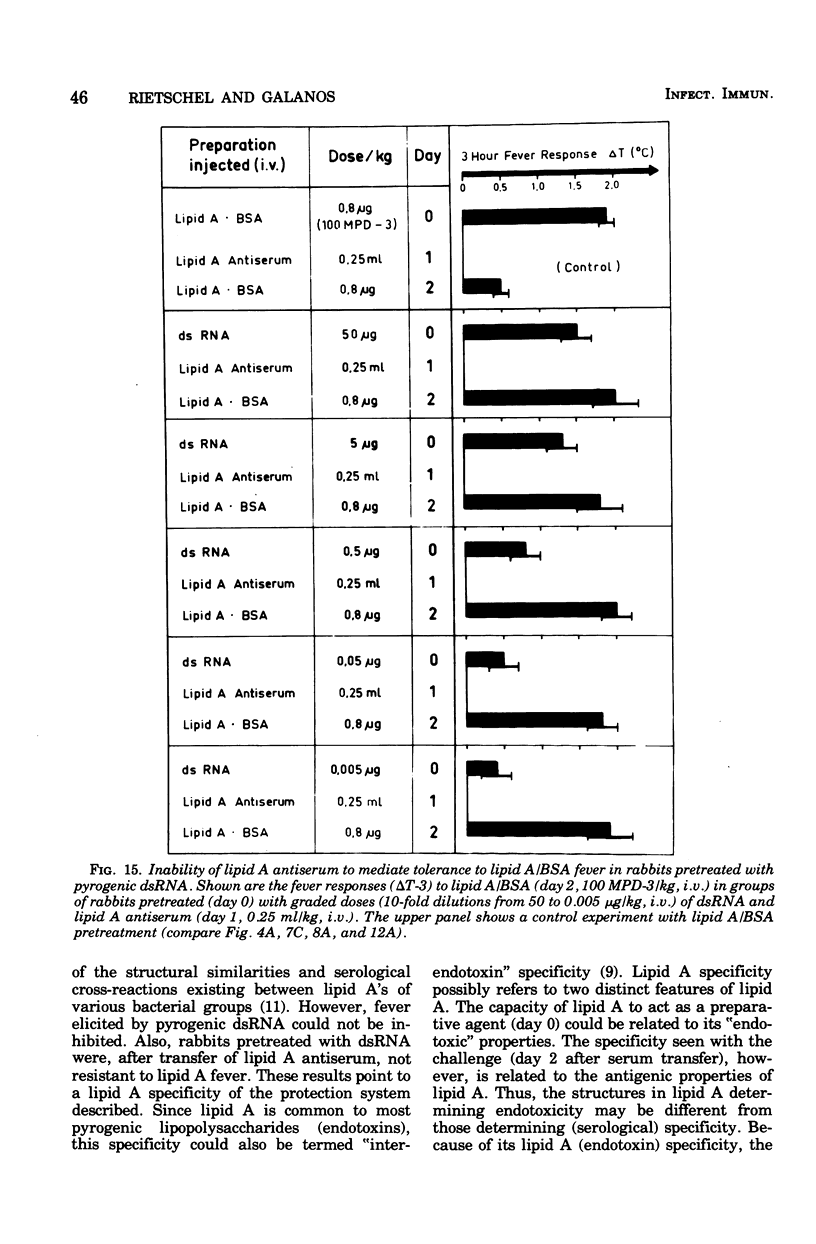
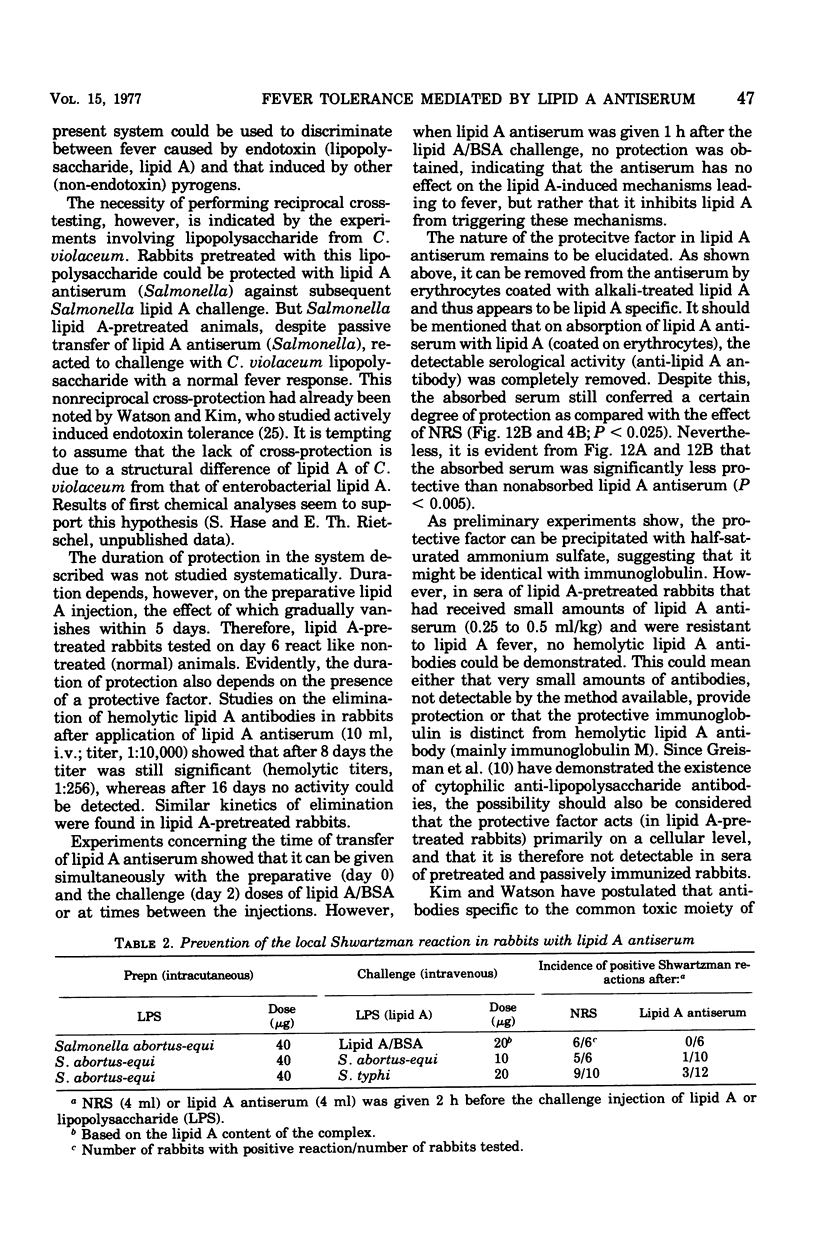
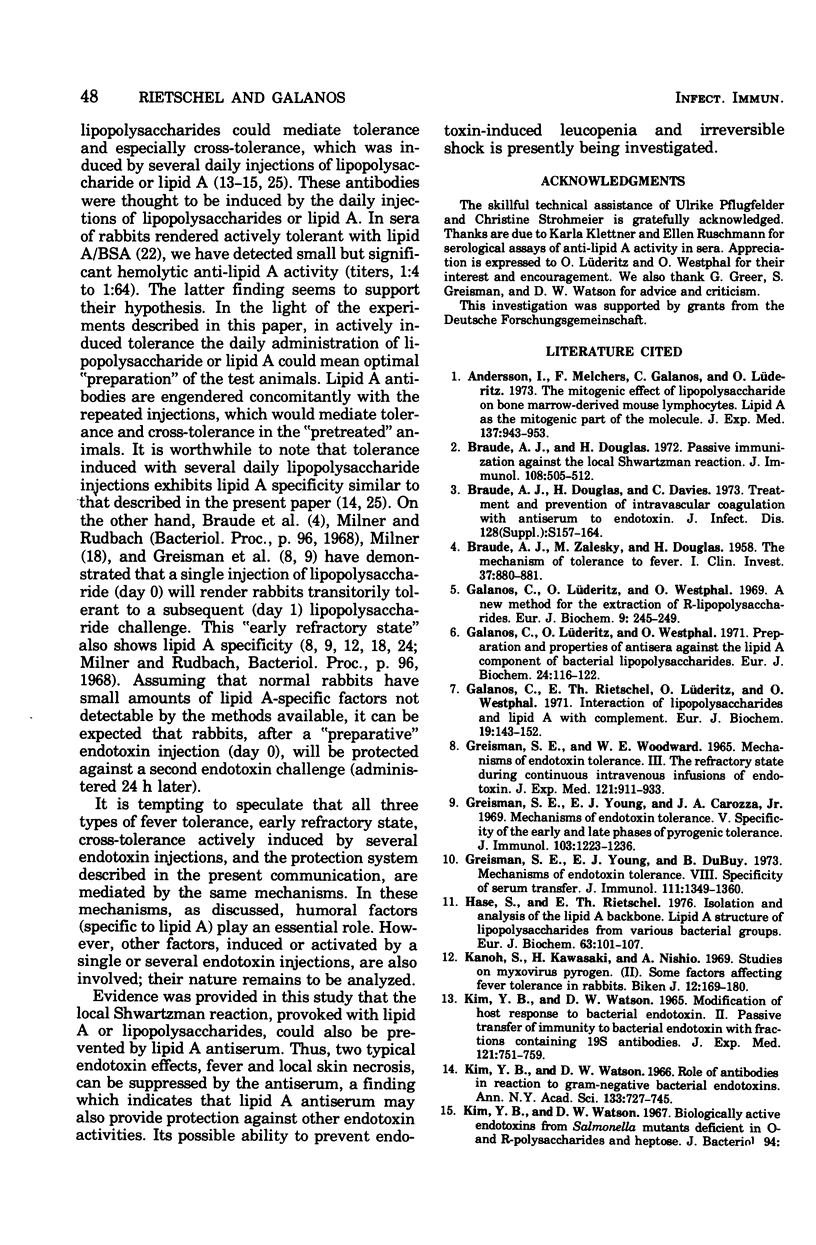
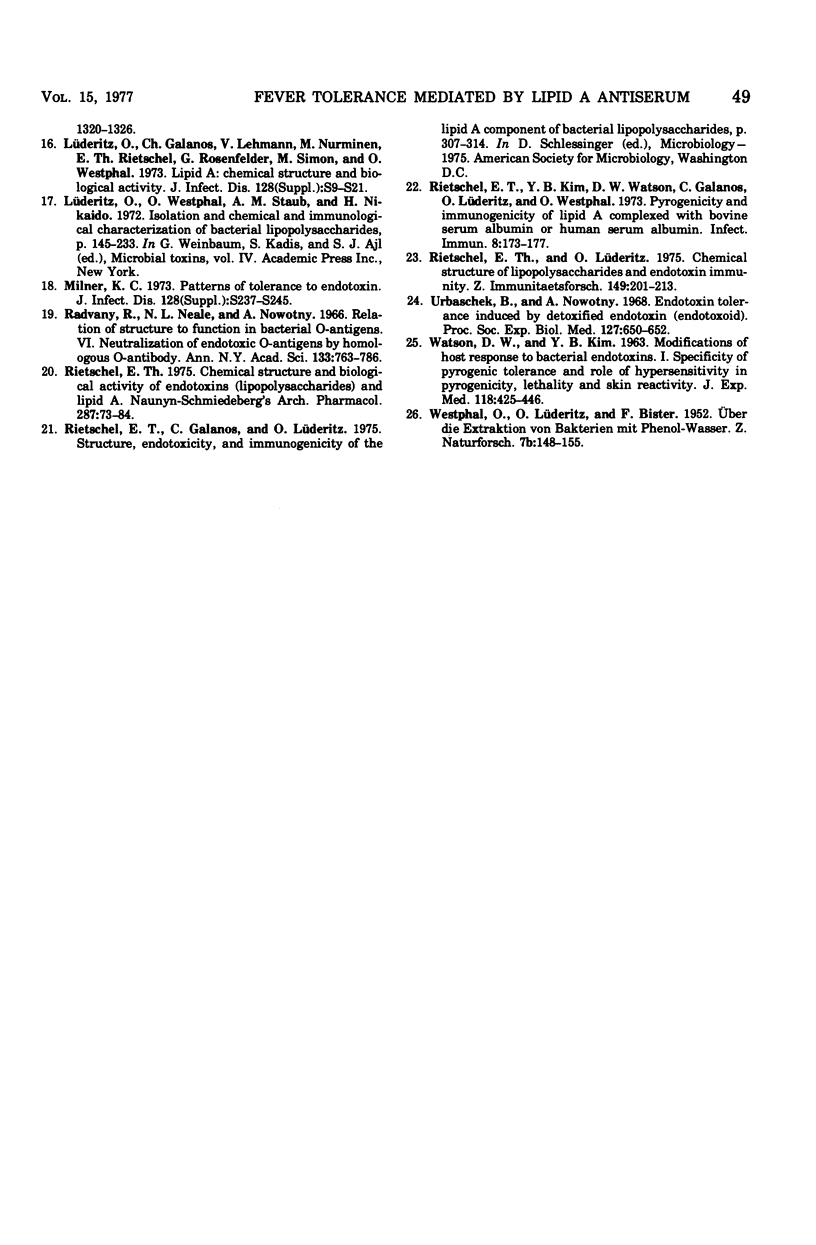
Selected References
These references are in PubMed. This may not be the complete list of references from this article.
- Andersson J., Melchers F., Galanos C., Lüderitz O. The mitogenic effect of lipopolysaccharide on bone marrow-derived mouse lymphocytes. Lipid A as the mitogenic part of the molecule. J Exp Med. 1973 Apr 1;137(4):943–953. doi: 10.1084/jem.137.4.943. [DOI] [PMC free article] [PubMed] [Google Scholar]
- Braude A. I., Douglas H., Davis C. E. Treatment and prevention of intravascular coagulation with antiserum to endotoxin. J Infect Dis. 1973 Jul;128(Suppl):157–164. doi: 10.1093/infdis/128.supplement_1.s157. [DOI] [PubMed] [Google Scholar]
- Braude A. I., Douglas H. Passive immunization against the local Shwartzman reaction. J Immunol. 1972 Feb;108(2):505–512. [PubMed] [Google Scholar]
- GREISMAN S. E., WOODWARD W. E. MECHANISMS OF ENDOTOXIN TOLERANCE. 3. THE REFRACTORY STATE DURING CONTINUOUS INTRAVENOUS INFUSIONS OF ENDOTOXIN. J Exp Med. 1965 Jun 1;121:911–933. doi: 10.1084/jem.121.6.911. [DOI] [PMC free article] [PubMed] [Google Scholar]
- Galanos C., Lüderitz O., Westphal O. A new method for the extraction of R lipopolysaccharides. Eur J Biochem. 1969 Jun;9(2):245–249. doi: 10.1111/j.1432-1033.1969.tb00601.x. [DOI] [PubMed] [Google Scholar]
- Galanos C., Lüderitz O., Westphal O. Preparation and properties of antisera against the lipid-A component of bacterial lipopolysaccharides. Eur J Biochem. 1971 Dec 22;24(1):116–122. doi: 10.1111/j.1432-1033.1971.tb19661.x. [DOI] [PubMed] [Google Scholar]
- Galanos C., Rietschel E. T., Lüderitz O., Westphal O. Interaction of lipopolysaccharides and lipid A with complement. Eur J Biochem. 1971 Mar 1;19(1):143–152. doi: 10.1111/j.1432-1033.1971.tb01298.x. [DOI] [PubMed] [Google Scholar]
- Greisman S. E., Young E. J., Carozza F. A., Jr Mechanisms of endotoxin tolerance. V. Specificity of the early and late phases of pyrogenic tolerance. J Immunol. 1969 Dec;103(6):1223–1236. [PubMed] [Google Scholar]
- Greisman S. E., Young E. J., DuBuy B. Mechanisms of endotoxin tolerance. 8. Specificity of serum transfer. J Immunol. 1973 Nov;111(5):1349–1360. [PubMed] [Google Scholar]
- Hase S., Rietschel E. T. Isolation and analysis of the lipid A backbone. Lipid A structure of lipopolysaccharides from various bacterial groups. Eur J Biochem. 1976 Mar 16;63(1):101–107. doi: 10.1111/j.1432-1033.1976.tb10212.x. [DOI] [PubMed] [Google Scholar]
- KIM Y. B., WATSON D. W. MODIFICATION OF HOST RESPONSES TO BACTERIAL ENDOTOXINS. II. PASSIVE TRANSFER OF IMMUNIY TO BACTERIAL ENDOTOXIN WITH FRACTIONS CONTAINING 19S ANTIBODIES. J Exp Med. 1965 May 1;121:751–759. doi: 10.1084/jem.121.5.751. [DOI] [PMC free article] [PubMed] [Google Scholar]
- Kano S., Kawasaki H., Nishio A. Studies on myxovirus pyrogen. (II). Some factors affecting fever tolerance in rabbits. Biken J. 1969 Sep;12(3):169–180. [PubMed] [Google Scholar]
- Kim Y. B., Watson D. W. Role of antibodies in reactions to gram-negative bacterial endotoxins. Ann N Y Acad Sci. 1966 Jun 30;133(2):727–745. doi: 10.1111/j.1749-6632.1966.tb52402.x. [DOI] [PubMed] [Google Scholar]
- Radvany R., Neale N. L., Nowotny A. Relation of structure to function in bacterial O-antigens. VI. Neutralization of endotoxic O-antigens by homologous O-antibody. Ann N Y Acad Sci. 1966 Jun 30;133(2):763–786. doi: 10.1111/j.1749-6632.1966.tb52404.x. [DOI] [PubMed] [Google Scholar]
- Rietschel E. T. Chemical structure and biological activity of endotoxins (lipopolysaccharides) and lipid A. Naunyn Schmiedebergs Arch Pharmacol. 1975;287(1):73–84. doi: 10.1007/BF00632639. [DOI] [PubMed] [Google Scholar]
- Rietschel E. T., Kim Y. B., Watson D. W., Galanos C., Lüderitz O., Westphal O. Pyrogenicity and immunogenicity of lipid A complexed with bovine serum albumin or human serum albumin. Infect Immun. 1973 Aug;8(2):173–177. doi: 10.1128/iai.8.2.173-177.1973. [DOI] [PMC free article] [PubMed] [Google Scholar]
- Rietschel E. T., Lüderitz O. Chemical structure of lipopolysaccharides and endotoxin immunity. Z Immunitatsforsch Exp Klin Immunol. 1975 Jul;149(2-4):201–213. [PubMed] [Google Scholar]
- Urbaschek B., Nowotny A. Endotoxin tolerance induced by detoxified endotoxin (endotoxoid). Proc Soc Exp Biol Med. 1968 Feb;127(2):650–652. doi: 10.3181/00379727-127-32765. [DOI] [PubMed] [Google Scholar]
- WATSON D. W., KIM Y. B. MODIFICATION OF HOST RESPONSES TO BACTERIAL ENDOTOXINS. I. SPECIFICITY OF PYROGENIC TOLERANCE AND THE ROLE OF HYPERSENSITIVITY IN PYROGENICITY, LETHALITY, AND SKIN REACTIVITY. J Exp Med. 1963 Sep 1;118:425–446. doi: 10.1084/jem.118.3.425. [DOI] [PMC free article] [PubMed] [Google Scholar]


